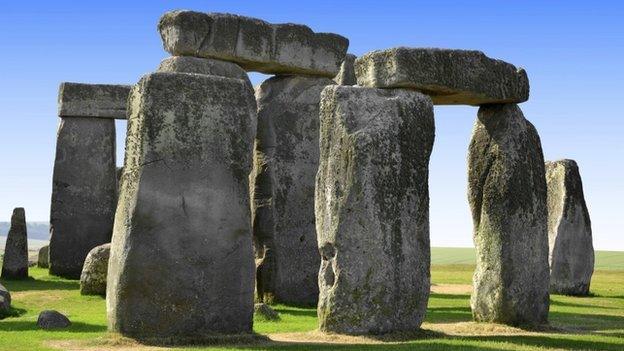Stonehenge experiment to be repeated with 'lost' stones
- Published
Replica stones were used in the BBC documentary Secrets of Lost Empires: Stonehenge, which was broadcast in 1996.
Another attempt is to be made to solve the mystery of how the largest stones used to build Stonehenge were moved.
In 1996, a BBC TV programme aimed to find out how the stones for the largest trilithon were put into place, and how the lintel was placed on top.
Since then the concrete replicas have remained untouched and forgotten about at an army base on Salisbury Plain in Wiltshire.
They have now been rediscovered and the experiment will be repeated.
Archaeologist Julian Richards is teaming up with farmer Tim Daw see if modern techniques are any more efficient.

Trilithon (or trilith)
A prehistoric structure or monument consisting of three large stones, two upright and one resting upon them as a lintel.
Source: Oxford English Dictionary

Mr Daw, who farms at All Cannings, near Devizes, and who created the first "Neolithic" long barrow to be built in the UK for 5,500 years, also works part-time at Stonehenge.
He said one of the most popular questions asked by visitors is 'how were the giant stones moved?'.
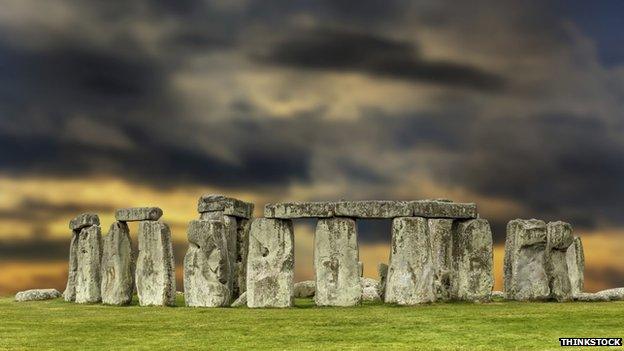
Experts have long wondered how the huge stones at Stonehenge were put in place
"When Julian Richards mentioned there was a life-sized replica of the largest stones at Stonehenge that were looking for a home that we could do some experiments on I said 'let's do it'."
The 45-tonne replicas were used in the BBC documentary Secrets of Lost Empires: Stonehenge, which was broadcast in 1996.
They have remained at Larkhill Camp, about a mile from Stonehenge ever since.
The experiment was partially successful, but now new theories have emerged about how the stones may have been moved.
Mr Richards said: "Over the last 20 years I've had lots of ideas come to me from different people from all over the world saying, 'there's a much better way of doing it, we know how it was done really, you've made it too complicated'."
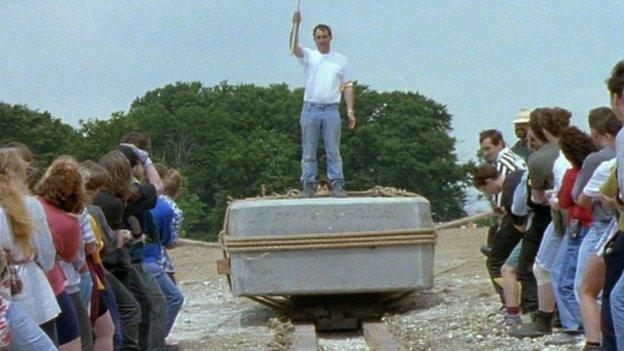
In the original documentary a team of volunteers successfully moved a huge stone
He said the new project would get together some of the original team to test out the new theories.
"We're going to have to get at least 200 people together for about a week to make this happen."
Mr Daw added: "The first thing is to collect the stones from Salisbury Plain where they have been languishing for the past 20 years and get them back to my farm," said Mr Daw.
"Hopefully next year we'll get some teams of people [to take part in the experiment]"
Mr Daw said different theories had now emerged about how the huge stones could have been moved.
"The experts certainly think they know more. Whether they actually do know more is an interesting question.
"Without trying all the wonderful ideas of how you do it Neolithic style, just using man power - no wheels, no draught animals, no machinery - we can't tell what is practical and what is just fantasy."
It is hoped the result of the experiment will be turned into another television programme to air next year.
- Published20 October 2014
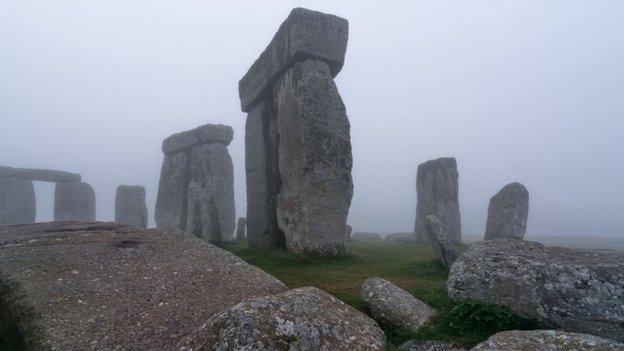
- Published20 September 2014
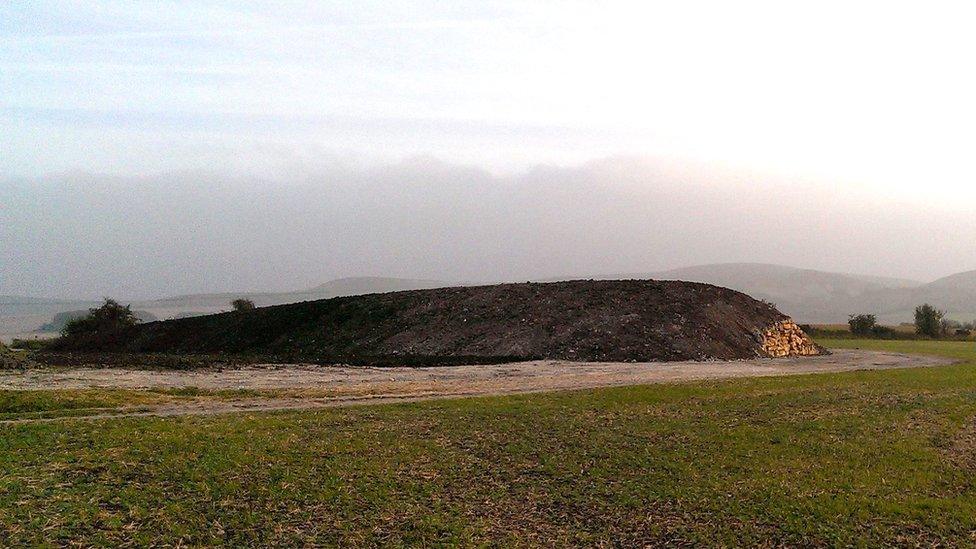
- Published10 September 2014
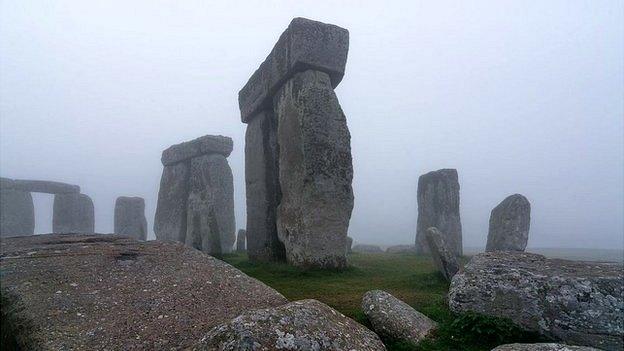
- Published30 August 2014
